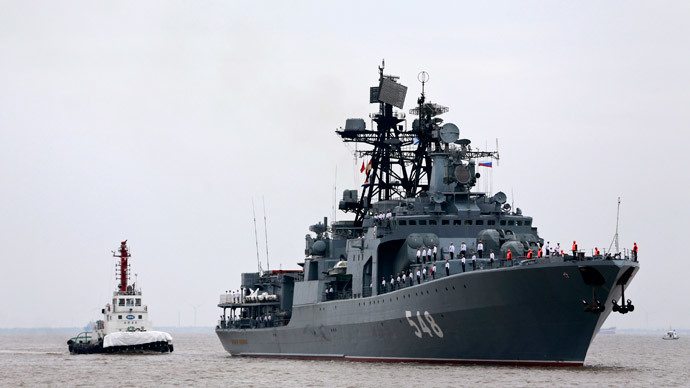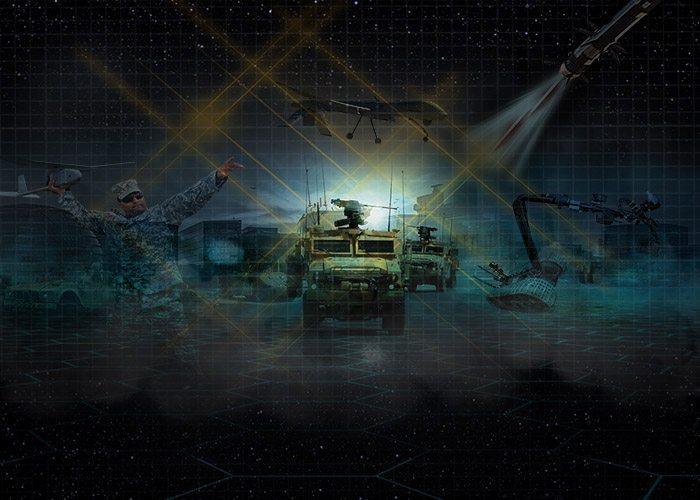Nowhere in the world has Russia reconfigured the balance of power over the last decade as effectively as it has in the strategic Black Sea region.
The militarization of the breakaway Georgian region of Abkhazia following the war with Georgia in 2008 and the annexation of Ukraine’s Crimean Peninsula in 2014, in conjunction with an aggressive military modernization that is now bringing new capabilities online, have given Russia powerful new tools to wield influence in the former Soviet Union and to exert pressure against NATO and the European Union.
Russia plans to spend $2.4 billion on the Black Sea Fleet by 2020, including the most modern surface ships and submarines, as well as integrated air-defense and amphibious-landing capacities. By the time the upgrade is completed, the Interfax news agency reported on February 16, the fleet will be able to strike 200 targets with Kalibr cruise missiles in a single salvo.
“The threat to the Caucasus, the Middle East, and to Europe as a result of Russian aggression against Georgia [in 2008] and Ukraine in 2014 and the overturning of the European status quo and the ensuing militarization of the entire area are matters of the utmost concern to [Western] security planners,” says Stephen Blank, a senior fellow at the American Foreign Policy Council and a longtime expert on security issues.
Littoral Danger
Moscow’s domination of the Black Sea casts a shadow over the littoral states. The pro-Western economic and political course of both Ukraine and Georgia has been stymied, and their ability to develop independently of Russia is seriously compromised. Earlier this month, Georgia announced plans to build a $2.5 billion cargo port at Batumi in hopes of creating a trade link between China and Europe. But whether that project will attract investors or function smoothly is now at least partially under Moscow’s control. Mere sabre rattling can be enough to make investors pull out.
The military doctrine adopted in July 2015 asserts Russia’s policy of resisting attempts “to overturn legitimate governments” in its region. “In effect, Moscow reserves for itself the right and obligation to defend governments that are amenable to Russian influence, even against the democratic choices of their own populations,” says Black Sea Rising, a new report by the Center for European Policy Analysis (CEPA).
Combined with the Kremlin’s active use of hybrid warfare and “little green men” actions, the Black Sea military buildup is worrisome in capitals from Moldova to Azerbaijan.
In addition, Russia’s new muscle in the region has NATO members Romania and Bulgaria concerned as well. “These trends have allowed Russia to essentially make it extremely difficult, if not impossible, for NATO to get into the Black Sea to defend NATO allies and partners without substantial losses of ships, planes, and men,” analyst Blank says.
Judy Dempsey, editor in chief of Carnegie Europe’s newsletter Strategic Europe, says Romania is “acutely aware of the situation” and has been working with NATO to create a rapid-deployment capacity in the Black Sea that is similar to what NATO already has planned for the Baltic region and Poland.
Through the use of political and economic pressure on Sofia and Bucharest, Russia is able to sow public doubts about the unity and resolve of the European Union and NATO.
Syria and the Mediterranean
In a speech at the Russian Black Sea Fleet headquarters in Sevastopol, Ukraine, in 2007, then-commander of the Russian Navy Admiral Vladimir Masorin said: “The operational zone of the fleet extends across the Black Sea and the Mediterranean all the way to the Atlantic Ocean. It is at the crossroads of Europe, Asia, and Africa, and here we must reestablish the permanent presence of the Russian Navy.”
Just over a year after the Crimean annexation, the Black Sea Fleet has already been turned from a “green-water” to a “blue-water” force, one capable of carrying out extensive operations in open waters. It has played an essential role in facilitating Russia’s military action in Syria.
Without this preparation, “they might have been able to airlift things into Syria and do some sealift, but nothing on the scale of what they have been able to do,” says analyst Blank. In addition, Blank says, after Russia completes the upgrade of its military base at Tartus, Syria, its dominance of the Black Sea will enable Moscow “to sustain a much larger force in the Mediterranean” over the long term.
The CEPA report notes that the Black Sea is already “the main logistical platform” for Russian actions in the Middle East, already enabling Moscow to maintain 10 ships in the eastern Mediterranean.
And Then There Was Turkey
Russia’s buildup in the Black Sea occurred during a time of good relations between Moscow and the other major regional power, Turkey. The warm personal relationship between Russian President Vladimir Putin and his Turkish counterpart, Recep Tayyip Erdogan, meant that Turkey was largely silent as Russia pushed forward in the region.
“We went into Syria without understanding that we were entering into a conflict with Turkey,” says Russian military analyst Pavel Felgenhauer. “It seems clear that Putin was sure that the Turks would be amenable and somehow we’d divide things up with Erdogan. This was a fundamental mistake.”
But Russia’s action in Syria has now brought the two countries to the brink of open conflict. On November 24, Turkey shot down a Russian military jet that Ankara said had entered Turkish airspace from Syria. The two countries have had virtually no diplomatic contacts since then.
With both countries prominently present in the Black Sea, the possibilities for more dangerous incidents are high, analysts say.
NATO officials are “very worried” about the possibility of a Turkish-Russian incident in the Black Sea, says Carnegie analyst Dempsey.
“In retrospect it is quite remarkable that there haven’t been accidents given so many different aircraft in the skies over Syria and, now, in parts of the Black Sea,” she adds.











